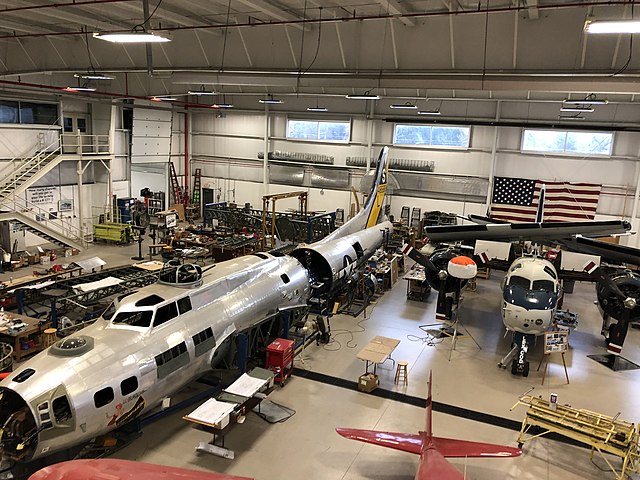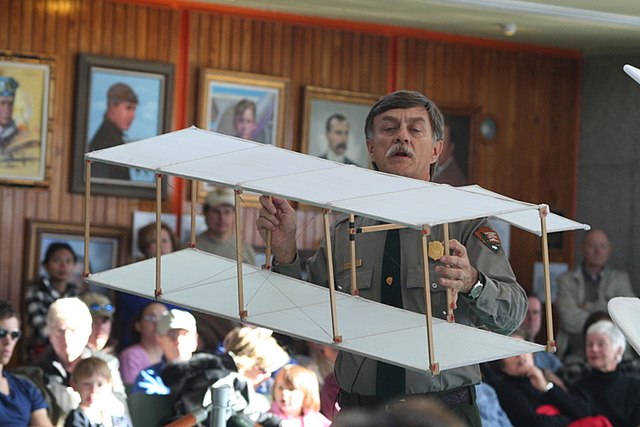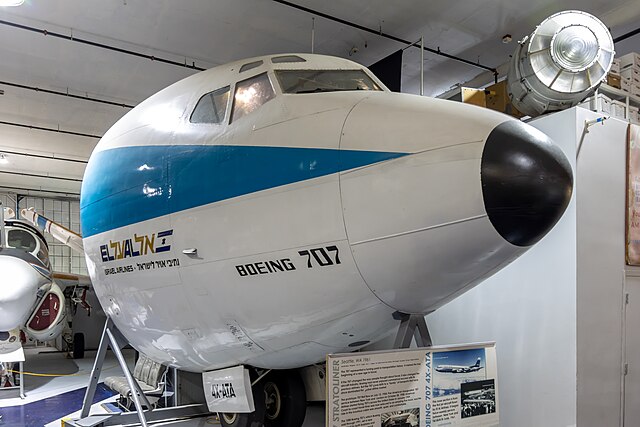
Hangar located in Champaign Aviation Museum
Not so long ago the catchphrase “Data is the new currency” was introduced to our vocabulary. Ever since, there have been various discussions that have been started on the topic. Given that something ordinary like a personal smartphone now has hundreds of thousands of photographs, videos, documents, and emails that capture information of an event/day/year in a digital form, we must contemplate whether the aviation community should do the same. And one of the most important nooks of the aviation community that needs a digital archive is an aviation museum.
The number of people who travel via air has only increased with time. During the evolution of aviation, many experimental aircraft have been designed, rejected, and improvised upon. Hundreds of scientific papers are being produced (on esoteric topics such as jet fuel contamination, fuel tankering, among others) each day, and there’s been a growth in the number of aviation news media outlets as well. Some iconic aircraft such as the Antonov-An 225 and the Stratolaunch – two of the largest aircraft in the world– might never see the skies again- the An 225, which was desecrated in the Russia Ukraine War may or may not be rebuilt. In light of such events, aviation museums need to make sure that the past and the present (will become someone else’s past) is digitally archived- after all there’s much too much of these.

The US Air Force Museum is home to some of the most esoteric aircraft in the world. Their website gives us information about why some of the aircraft were brought into the museum.
Therefore, in this article, we are going to take a look at why digital archives are so very important for aviation museums.
1. The Democratization of Aviation Knowledge
There is a great concern whether access to information has been monopolized by people who control technologies. So the cries for democratization of knowledge have gained a lot of traction. This holds true for knowledge related to aviation as well. In massive open online courses, one can complete their Bachelor’s, Master’s and even their Doctorate program on aviation. In much a similar way, aviation museums also need to be able to provide knowledge stored in their museums to the public. This will make way for better learning opportunities for students, researchers, writers, and students alike.

Park Ranger giving talk at Wright Brothers Memorial. But with the initiative of the museum to offer a chance for someone to talk to the ranger online, people from any corner of the world who are interested in aviation can talk to a ranger.
There are students in some of the remotest corners of the world who would never be able to make it to the Wright Brothers National Park to see the world’s first airport. But their excellent virtual classrooms include various perks such as:
- A chance to chat with a ranger working at the memorial.
- Virtual field trip for students
Virtual learning sessions like these will help foster students’ creativity, and make knowledge more democratic.
2. Minimizing Carbon footprint
There are some museums that lie across one’s continent. To visit such museums, one would have to embark on an intercontinental flight. Since the aviation community has not yet had a viable program to curb the impacts of fuel tankering on the environment nor have the tags of esoteric vocabulary such as Flygskam or Tagskryt stopped haunting aviation completely, digitizing archives might help paint the industry in good light.
If such an endeavor were to be undertaken, students and potential museum visitors could learn about the museum and the things at store at the museum in advance. This would help them decide whether taking a flight (or any other mode of transportation) to visit the museum would be with the effort, and carbon footprint.

Due to a huge carbon footprint aviation produces, digitizing information at aviation museums might help people access knowledge without the need to fly or travel to a museum.
For example, the Museum of Flight writes about the treasure troves of information that has the potential to be digitized :
“The Museum of Flight Archives contains over 5,000 cubic feet of paper, photographic, and audiovisual materials that document the evolution of manned flight, from the Wright Brothers to modern jet travel to space exploration. We have millions of images, including photographic prints, negatives, slides, and transparencies. Our paper-based materials include maps, charts, drawings, blueprints, log books, diaries, manuscripts, research and technical documentation, correspondence, philately, and ephemera such as airline tickets and luggage tags.”
An in-person visitor who has come to visit the Museum of Flight from afar might not even have enough time to spend at the museum going through all the documents too. So, in addition to minimizing the footprint of travel, there’s also the perk of saving some money (in terms of arranging extended stays to research at the aviation museum for the travelers) and time.
3. Keeping the first copy safe
Any journal or a book or a historical document in paper can undergo wear and tear as it is handled by a lot of people. Digitizing such an archive helps keep the original safe. A way in which the original copy is kept safe is the following:
- Any researcher going over documents in an aviation museum is sure to carefully analyze all the written text before recognizing what part of it might be useful.
- But a person using a digitized version of the manuscript (maybe a DOCX file or a PDF) can simply use the “Control/Command+F” to find the exact keyphrases that might be useful

Many museums in the world have manuscript that are extremely valuable- too valuable to lose. Digitizing them is a way to preserve the original.
Many historical documents/ drawings etc. in various (aviation) museums have been considered far too valuable to be handled by visitors as there’s a possibility of wear. This is where the preservation of the first copy , alongside the democratization of knowledge, commingle. The Guardian cites an excellent example of how this is achieved:
“We have a collection of documents and objects that are invaluable both culturally and monetarily, for example The Munich Agreement (which allowed Hitler to annex the Sudetenland)…As it is written on wartime paper, it makes it less durable than modern paper and requires an environment with regulated humidity, light and temperature. By digitising this document, people can zoom into it and it can be shown to a large group at the same time – something that might prove difficult if it were displayed in a heavily guarded case in a museum.”
4. Promoting museums as places for tourism
In a research paper titled “The impact of digitalisation and digitisation in museums on memory-making” (published in Taylor and Francis online), the researchers have touched upon the changing zeitgeist of how museums are driving tourism in certain places:
“amongst different types of tourists, purposeful cultural tourists (i.e. those tourists for whom culture is the main motive for travel and who seek deep cultural experiences) were the greatest consumers of museum experiences in Hong Kong. The importance of museums as tourist attractions is further highlighted by visitor statistics. For example, a survey done by the Museums and Galleries of New South Wales (NSW) between August 2014 and March 2015 reported that 59 per cent of visitors were locals and 41 per cent were tourists (not differentiating between International and Interstate).”

A Boeing 707 Stratoliner, 4X-ATA in display At the Cradle of Aviation Museum. Perhaps aviation museums like these will help bring more tourists in, and bosst the economy of the place where the aviation museum is housed in!!
The writers have quoted a certain terminology known as “edutainment”, which museums provide to the visitors. Since a lot of people now watch tons of videos, or read about places they want to go to, or learn about its socio-economic or technological development before committing to go there, an aviation museum which provides digital archives can add to a tourists ‘edutainment value and help bring in tourists to a particular place, and add to the economy of a place.
For example, a person who reads about the top 10 must see aircraft at the national museum of the US Air Force (USAF) might be tempted to go to the place. And if it weren’t for the USAF museum archiving some of the information it had about such aircraft, the museum might not have had as many visitors as it would have otherwise had.
Considerations for aviation museums needs before making digital archives
In a world that is revolving around the “digital revolution”, many aviation museums are latching on to the trend of digitizing its archives. But there are a few things that the museums need to consider as well:
- A loss of context (about the object that is digitized) might leave the visitor confused about the subject. So plenty of contextual information is needed.
- Making sure that the platform where the digital archive is made is user friendly.
- The archival storage of the physical object should be given as much importance as the digital storage.
